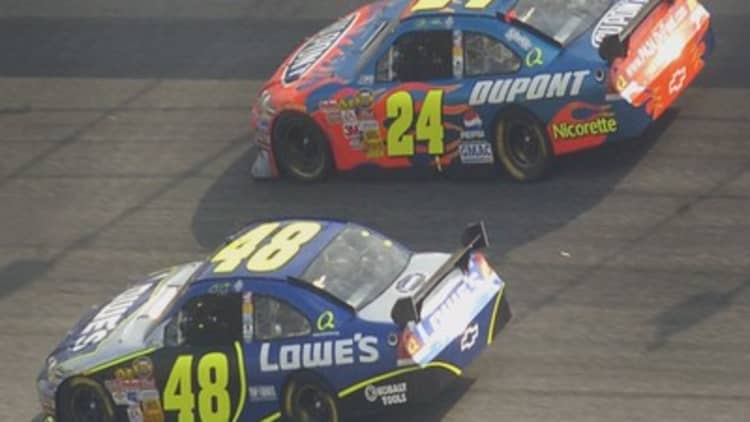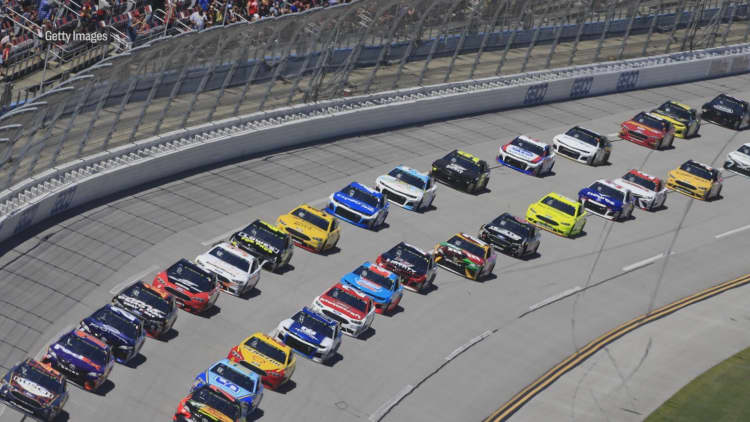
For over 70 years, NASCAR has been a staple in American sports. It got its humble start hosting races on the sandy beaches of Daytona and has since grown into America's premier racing league. But the iconic U.S. sports league has had an undeniably rough few years.
It's been losing TV viewers. It's having trouble filling the stands, even after losing tens of thousands of seats from its stadiums. And perhaps most worrisome of all, it's losing sponsors, and those that remain are paying less than they used to.
So what went so wrong with NASCAR?
Straying from the brand
It's partly to do with the fact that it's alienated its core stock-car racing fan.
In a bid to attract a new kind of audience, NASCAR moved into trendier markets in the 90's. NASCAR built superspeedways in Las Vegas and Southern California – and shut down some classic venues in America's southern states.
But the move to be nimble with the brand backfired. The new crowds didn't convert into the die-hard loyalists that the sport needed.
Former NASCAR executive Ramsey Poston says the league was trying to enter new markets without the Southern stigma - a move that he calls a mistake. "NASCAR seems to have run away from its southern roots. In doing that, it's damaged its brand identity. For example, a brand like Jack Daniels. It has an outlaw connotation to it. It's clearly from the south and never has Jack Daniels apologized for it."
NASCAR also tinkered with its race format multiple times over the years. And then there was that infamous car redesign in 2007. The "Car of Tomorrow" was a lot less noisy – and safer. But less high-speed pileups and more single-file racing just didn't play well with fans. It also streamlined the look of rival cars, again subduing fan fervor.
Sponsor apathy
All that, together with the Great Recession – and the rise of cord cutting – has taken its toll on NASCAR. Spectators and more worryingly – sponsors – have jumped ship. Target ended 16 years of NASCAR sponsorship in 2017.
Sponsorships have always been the lifeblood of NASCAR and a prominent part of its image – as seen in its cars and driver racing jackets.
Jerry Freeze, the General Manager for Front Row Motors, says the "overwhelming majority" of its income comes from sponsors. Though the breakdown varies from team to team, Freeze says it can comprise as much of 75 percent of its revenue.
At one point, it attracted more money from more Fortune 500 companies than any other sports or entertainment property in America.
AP reports that at its peak, a top team might spend $30 million to run a race car – with sponsorship money funding most of that.
But now, some owners say they're now getting half of what they used to 15 years ago.
Freeze says it's become more challenging over the years to land sponsorships. "The beginning of my time in NASCAR, we would have one sponsor that would sponsor the car for the whole year. And now the car has a different look each week, depending on who the partners are. So you're left scrambling to get decals produced and putting them on the car before the next race."
And NASCAR teams aren't just losing sponsors, they're also slashing the going-rate to advertise.
France family considers jumping ship
NASCAR is notoriously closed-mouth about its earnings, making it difficult to gauge the financial fallout of NASCAR's fading popularity.
The league has been privately-owned by the France family since its start. But now, they're apparently looking to ditch their majority stake.
Nobody knows exactly how much NASCAR is worth, but if the international racing league Formula One is any indicator, we're looking at something in the multi-billion dollar range. F1 sold for $8 billion in 2016.
NASCAR still rakes in lots of TV dollars
NASCAR may be hemorrhaging fans and sponsors, but it's actually making more money doing it.
To be clear, TV ratings have taken a beating. The Wall Street Journal reported that NASCAR's television viewership is down 45 percent since its peak in 2005.
The sport has lost more than a third of its viewers, but JP Morgan analyst Alexia Quadrani says NASCAR still saw a "46 percent increase in its average annual TV revenue after renewing with FOX and striking a new agreement with NBC."
While it helps NASCAR's bottom line, it may also just be a reflection of the rising value of live sports. Live events are TV's bread and butter, so even though there's less eyeballs, the value of them is higher than ever, especially for an established brand like NASCAR
And NASCAR remains optimistic.
The company says nearly half of Fortune 100 companies invest in NASCAR, an 11 percent year-over-year increase.
It's also seen a big appetite for its digital video content. Forbes recently reported that NASCAR's digital platform saw a 58 percent rise in video views. NASCAR Fantasy Live players are up 135 percent.
So what many consider the crown jewel of TV sports may actually prove a pretty attractive sell after all.
WATCH: NASCAR shops itself around to potential buyers



